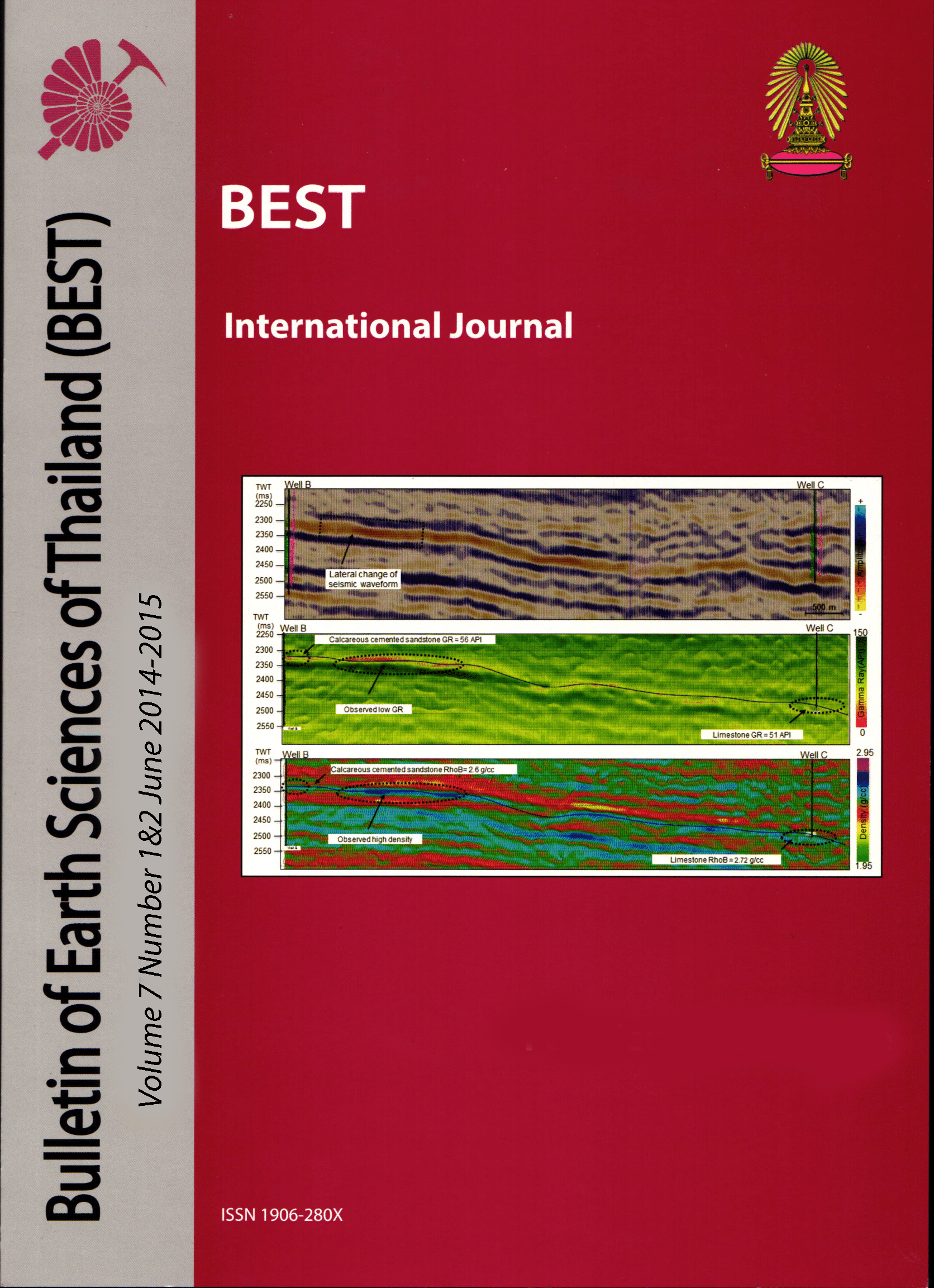Pore Pressure Estimation Using Resistivity Log in the Southern Pattani Basin, Gulf of Thailand
Main Article Content
Abstract
The application of Eaton’s resistivity log-based pore pressure prediction method is typically not a pore pressure analyst’s preferred method, yet a resistivity log is run is almost every well to identify hydrocarbon occurrence. Rather, Eaton’s sonic log -based approach is typically used to predict overpressure in the Gulf of Thailand and other hydrocarbon basins in SE-Asia. Significant factors affecting the utility of resistivity measurement are typically poorly constrained or quantified over the complete downhole length of a resistivity log run. Rather the log-analyst tends to focus on the interpretation of a suite of resistivity logs in particular zones of potential hydrocarbon occurrence. And so, until now, Eaton’s resistivity approach has not been successfully used for reliable pressure prediction in the Pattani Basin, Gulf of Thailand. Success requires accurate downhole corrections for salinity and temperature variation, and application of appropriate resistivity filters to minimize influences of organic-rich shale and radioactive non-shale formations. The methodology and filtering approach developed in this study means resistivity logs, rather than sonic logs can reliably predict overpressure in the Gulf of Thailand. This approach can supplement or even replace the sonic-based method as a resistivity log suite is typically run in every petroleum well in Pattani Basin, and in most other hydrocarbon basins worldwide. Its application can also improve cost efficiencies in terms of wireline tool selection for pore pressure analysis in any particular well in the Gulf of Thailand. Furthermore, in order to increase drilling efficiency and minimize drilling risk, it can be used as real-time application while drilling (MWD/LWD) and so perform real-time pore pressure prediction during field operations.
Article Details

This work is licensed under a Creative Commons Attribution-NonCommercial-NoDerivatives 4.0 International License.
Copyright © 2008 Department of Geology, Faculty of Science, Chulalongkorn University. Parts of an article can be photocopied or reproduced without prior written permission from the author(s), but due acknowledgments should be stated or cited accordingly.
References
Amonpantang, P., 2010, An Overpressure Investigation by Sonic Log and Seismic Data in Moragot Field, Gulf of Thailand: Master’s thesis, Chulalongkorn University, Bangkok, 64 p.
Bowers, G. L., 1995, Pore pressure estimation from velocity data: Accounting for overpressure mechanisms besides undercompaction: SPE Drilling & Completion, v. 10, p. 89-95.
Eaton, B. A., 1972, The effect of overburden stress on geopressure prediction from well logs: Journal of Petroleum Technology, v. 24, p. 929-934.
Eaton, B. A., 1975, The equation for geopressure prediction from well logs: Fall Meeting of the Society of Petroleum Engineers of AIME, Dallas, Texas.
Kamvan, J., 2013, Different Types of Organic-Rich Geological Markers in the Sub-Surface in the North Pailin Field, Pattani Basin, Gulf of Thailand: Master’s thesis, Chulalongkorn University, Bangkok.
Matthews, M. D., 2004, Uncertainty-Shale Pore Pressure From Borehole Resistivity: Gulf Rocks 2004 the 6th North America Rock Mechanics Symposium (NARMS), Houston, Texas.


